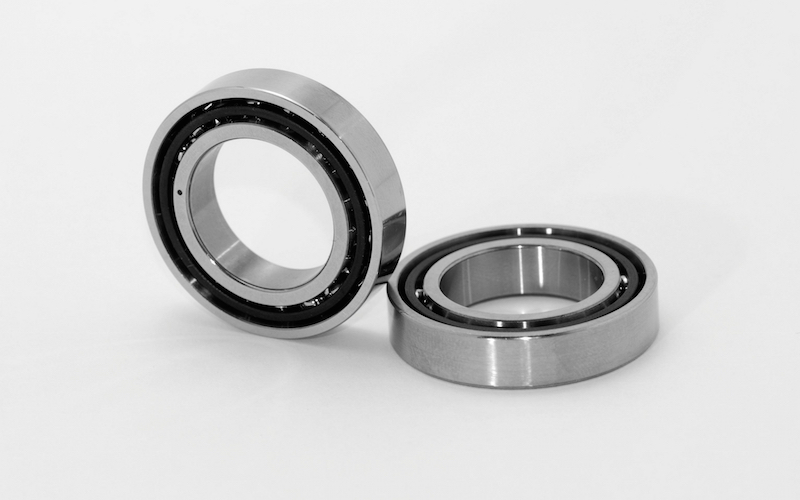CONTACT US
Zhejiang waxing electromechanical co.LTD.,Factory located in Shandong,Headquarters located in Zhejiang,China.
Bearings may be small, but they play an invaluable role in keeping industrial machinery running smoothly. Improper lubrication, contamination, corrosion, overload, along with improper handling, mounting and storage are all leading causes of bearing failure. Here are five steps to avoid these common problems and future process disruption.

1. Steer clear of improper handling, mounting, and storage
Bearings should be stored horizontally in their original packaging in a clean, dry, and room temperature environment. When bearings are unnecessarily handled, for example, if their wrappings are prematurely removed, this can expose them to corrosion or contaminants. Even while they’re being stored on shelves, the bearings can still experience harmful vibrations because of the facility’s daily operations so it is important to store the bearings in an area not exposed to vibration.
2. Don’t overload the bearing
When selecting the bearing to best fit your needs, it’s important to remember that inappropriate loads cause increased fatigue and risk of bearing failure. To get the best life ratings from your bearings, limit the actual load to between six and twelve percent of the bearing’s dynamic load rating. This load rating does however vary according to the bearing material. For example, stainless steel bearings will support approximately 80 to 85 percent of the load figures indicated for chrome steel bearings.
The more the bearing is overloaded, the shorter the bearing life. Overloaded bearing components will experience premature wear. These bearings should be replaced to safeguard the surrounding equipment.
3. Avoid contamination
Contamination in the form of dust or dirt entering the bearing’s raceway is problematic. Therefore, choosing a closure that protects against these foreign particles entering the bearing and keeps the lubrication inside, is crucial. Closures should be expertly matched to the application, depending on the operating environment. While we’d always recommend seeking the advice of a bearing specialist, here are a few pointers to bear in mind.
Firstly, choose closures that will withstand the environmental and operating conditions. Routinely check bearing seals for hardening or wear. Inspections should also be carried out for lubrication leaks. When conducting maintenance, try to avoid using steam cleaning methods or high-pressure sprays. This may be difficult in the food and beverage industry so sealed bearings with a washout-resistant lubricant are recommended. If maintenance isn’t conducted appropriately, it can do more harm than good. In fact, it is easy to damage seals and force contaminants into clean equipment if not handled correctly. This is where condition monitoring such as vibration analysis can provide vital insight into the bearing’s operating condition and alert an operator to any changes without invasive action.
4. Limit corrosion
Wearing gloves will ensure that perspiration or other liquids do not affect the bearing in low-corrosive environments. However, corrosion-resistant bearings will be needed in applications where corrodible materials wouldn’t suffice — think food processing, chemical manufacturing, pharmaceutical production and bearings for marine applications.
Corrosion occurs primarily when the bearings have been exposed to water or more corrosive liquids. In some cases, it leads to etching on the surface, which will eventually develop rust. Flaking and cracks in the bearings can then follow. Common signs of corrosion are dark coloured or reddish-brown areas on the balls and raceways. Eventually, you may see pitting of the raceway surfaces. While the material choice is a crucial first step to combatting corrosion, preventative measures such as the use of lubricants with rust inhibitors are also recommended.
5. Use the correct lubrication for the bearing
Standard lubrication will do its bit in reducing friction and dissipating heat. However, this lubricant may not satisfy the maximum running speed, torque level and temperature requirements of your application. Specialist lubrication may be required.
Similarly, if the lubrication quantity isn’t sufficient, the balls, retainers, and raceways will have metal-on-metal contact, and friction will wear down the bearings. By contrast, if the bearings are overfilled with grease, heat cannot be dissipated, causing the bearing to overheat. In both scenarios, this will reduce the efficiency of the equipment and overall process. Choosing the correct lubricant should start with the application conditions but should also consider the correct lubricant quantity and viscosity for the load, avoiding temperatures that are too extreme for the specified bearing, and preventing ingress of dirt or other contaminants.
While these five steps offer a good starting point to reduce bearing failure and extend service life, appropriate design engineering and early intervention are key.
Copyright © 2025 Zhejiang waxing electromechanical co.LTD. | All Rights Reserved Design
Hello, please leave your name email or WhatsApp here before chat online so that we won't miss your message and contact you smoothly.